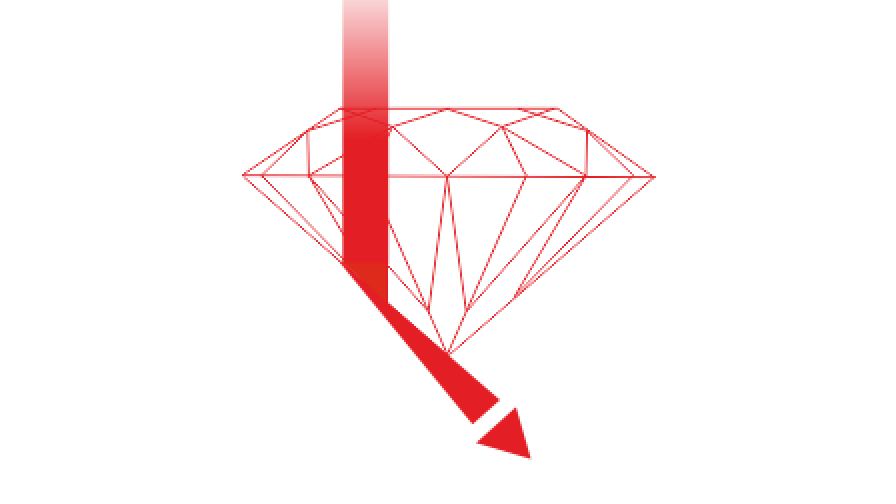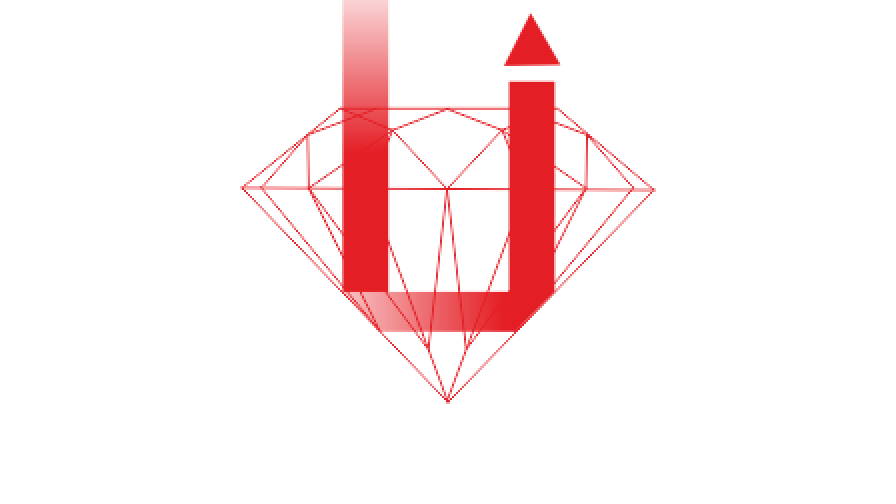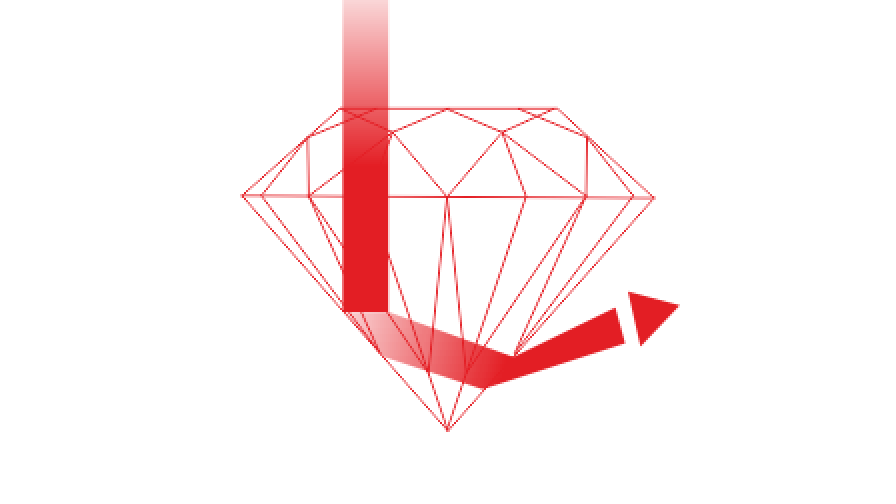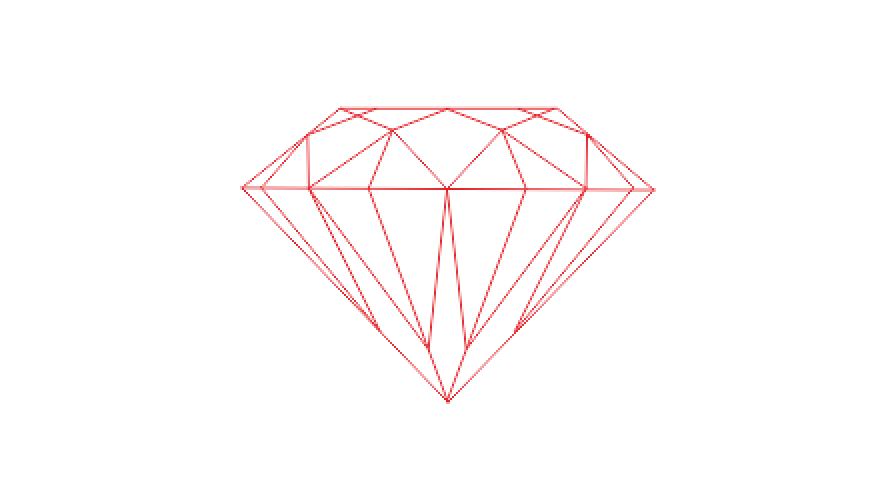Diamond Knowledge Center
Metal Knowledge Center
Gemstone Knowledge Centre
Jewelry Knowledge Center
Glossary of Terms

Diamond Cut Guide
A first-class cutting is what brings blaze to the ice. One of the most significant and important characteristics of a diamond is its cut. Cuts of a diamond refer to its proportions, evenness and polish. It is the cut that verifies the symmetry of the stone's facets, its overall proportions, and its capability to reflect light. A well cut diamond will attains high level of brilliance, sparkle, and durability. Even if a diamond is graded well in other areas, a poor cut can give a dull and muted outcome. A diamonds beauty greatly depends on cut than any other factor. In simple words, if a diamond does not catch your eye or it doesn’t flash in light it can be labeled as not well cut.
Cut showcases the amalgam of scintillation, fire and brilliance. A gem gets its identity from the cut as depending on the cut facets the bright flashes of gems are evoked. It is required to cut the facets in symmetrical order otherwise the diamond loses its brilliance as the dispersion of light does not occur with veracity. The diamond cutters are also enforced with the responsibility to pay attention to the size of the diamond also as a brilliantly cut diamond also reduces its worth if its size appears to be relatively short. A proportion must be maintained in between the depth of cut and size, so that the attributes of cut fire, brilliance and scintillation are achieved while its generic size is also retained. A specific depth must be maintained while cutting a diamond, if it is too shallow, the in going light escapes through the bottom of the diamond and in case the cut is too deep, the entering light again passes through the bottom of diamond after refraction. If we observe a well cut diamond, intense fire can be sighted that arise when the traversing ray of light entering the diamond undergoes many refractions inside and at last reaches the eyes of beholder bringing the iridescence effect alive in front of eyes. An excellent cut diamond when emblazoned in a yellow gold engagement rings, it brings out beauty of the diamond rings with its fiery sparkle. Eternal glint of diamonds are beyond compare, but still depending on the variation of cut, the blaze of diamonds vary. The categories of cut have been described below and the details of cut of diamond are provided in the information section of the particular piece of stunning diamond jewelry.
Following Scale Is Assigned As A Cut Grade By The GIA:
Excellent
Maximum fire and brilliance. Reflects almost all of the light that enters the diamond, creating excellent sparkle and life.
Very Good
Appropriately reflects most of the light that enters the diamond, producing superior fire and brilliance. In normal lighting conditions, it appears very similar to outstanding cut, at a lower price.
Good
Reflects a most of the light that enters the diamond, for an above average look. A superb value in comparison to higher cut grades.
Cut
It is the cut of a diamond that decides how much light is reflected back to the wearer, directly influencing its brilliance and fire. Diamonds are categorized into three main types of cuts:







Shallow cut
Even though a shallow cut diamond creates the illusion of a larger stone, it allows light to escape out of the sides instead of reflecting from the top, generating a lack of brilliance and sparkle.
Ideal Cut
If you're looking for a high quality diamond that brilliantly reflects light, this is the cut for you. This leading cut style is well-balanced and vigilantly angled to achieve a luminous look.
Deep cut
This type of cut scantily reflects light, resulting in a dull, muted appearance.
Attributes of a Cut
Cut is the sole factor that stimulates a diamond’s brilliance, fire, and sparkle. Though exceptionally difficult to analyze or quantify, the cut of any diamond has three primary attributes:
Brilliance
Brilliance refers to the white light reflections from the inner and outer facet surfaces of a diamond. Whenever light strikes the diamond's surface, some light enters it and is returned back. The most instantaneous light reflected back is returned by the crown's angles.
Fire
Fire speaks about the spectral of colors which are produced as a result of the diamond dispersing the white light. Once the light springs back from the inner walls towards the centre of the diamond, it then discharges back through the top of the diamond. Because the light is a little bent by the diamond, a color spectrum becomes visible when light exits the top of the diamond.
Scintillation
Scintillation refers to the tiny flashes or sparkles of light that become visible when the diamond, light source or the viewer is moved. The light that is not directly reflected back enters the diamond and reflects from the inner walls towards the centre of the diamond. This light, which bounces off the inner walls of diamond, is labeled as scintillation.
